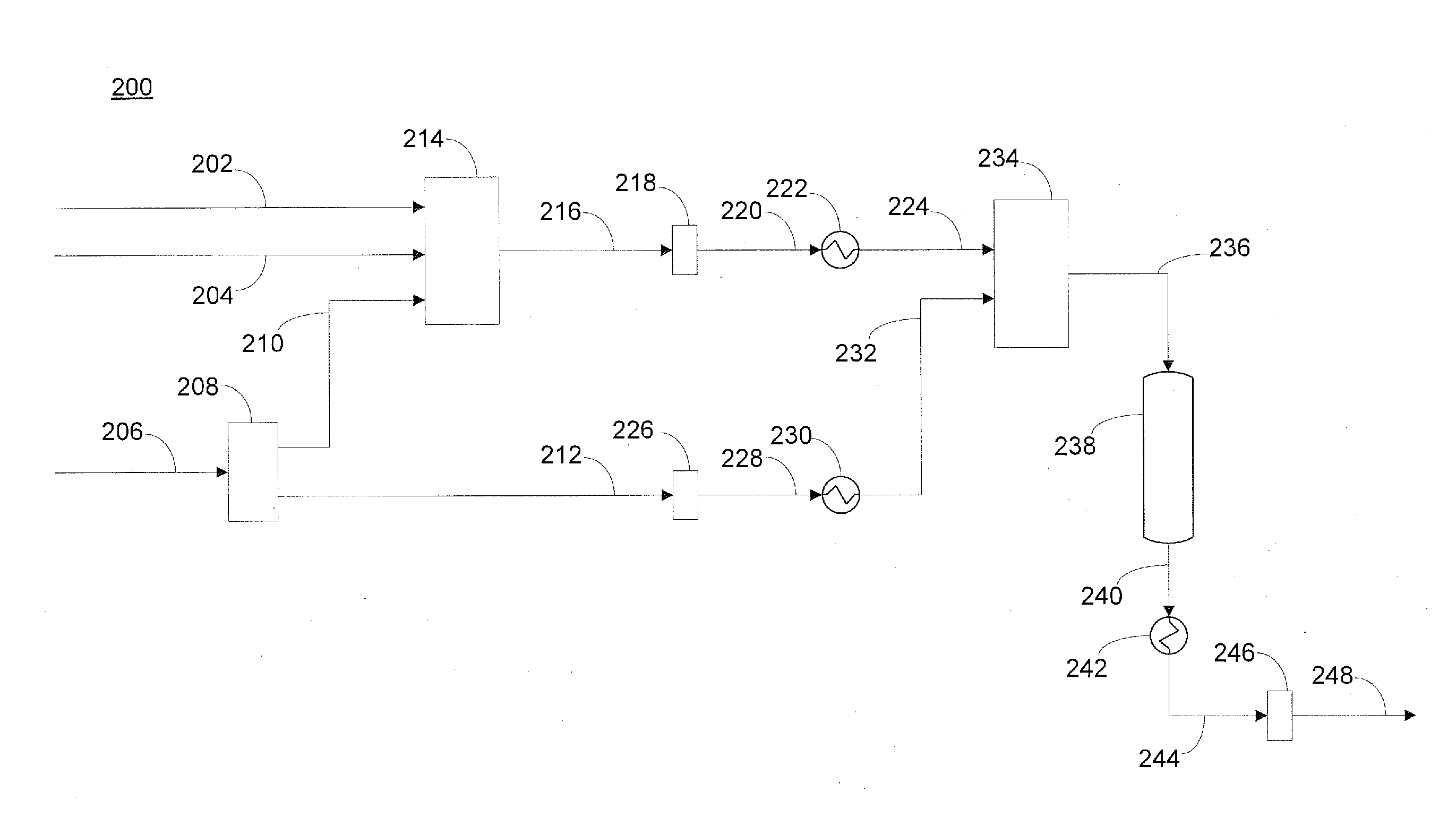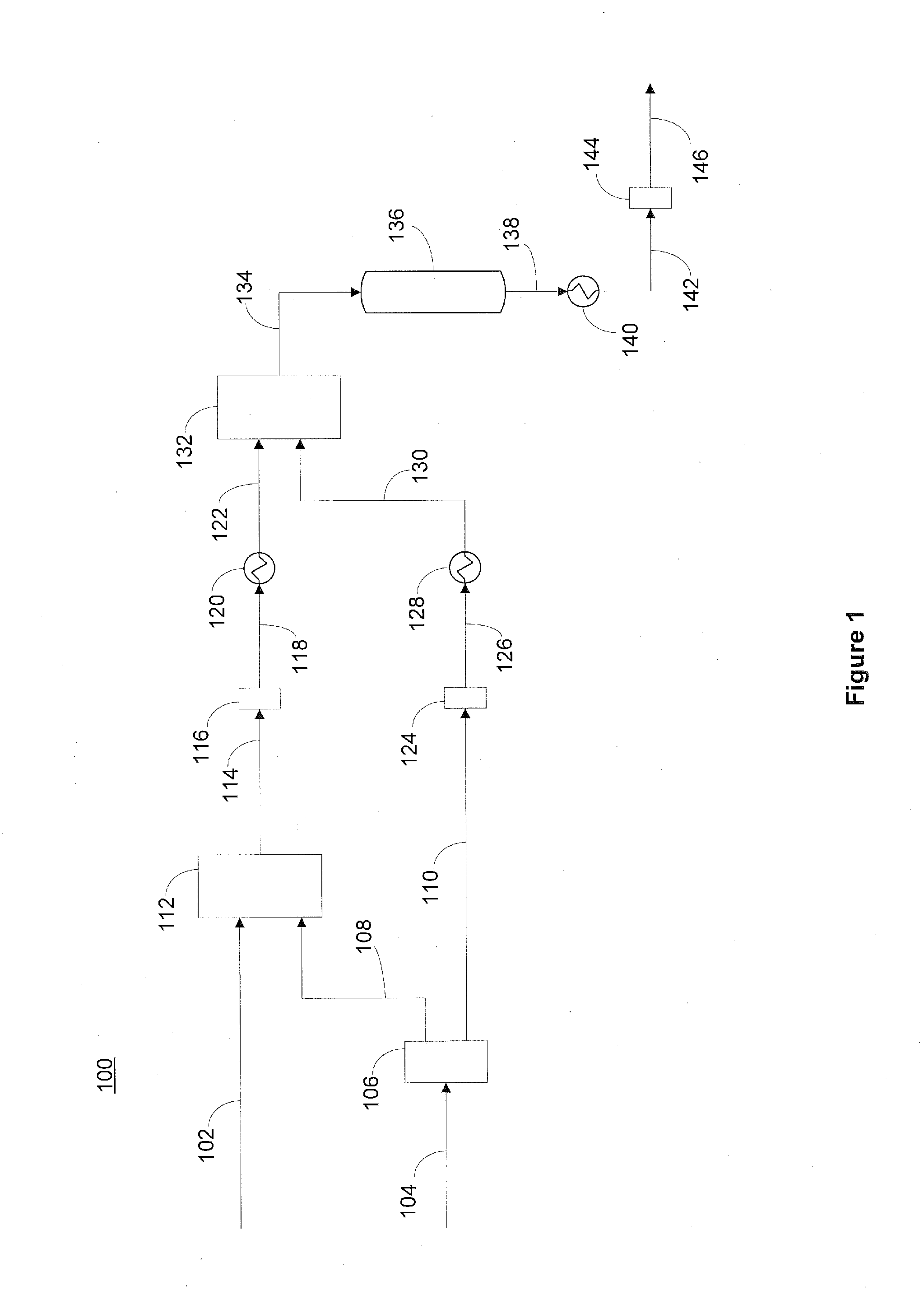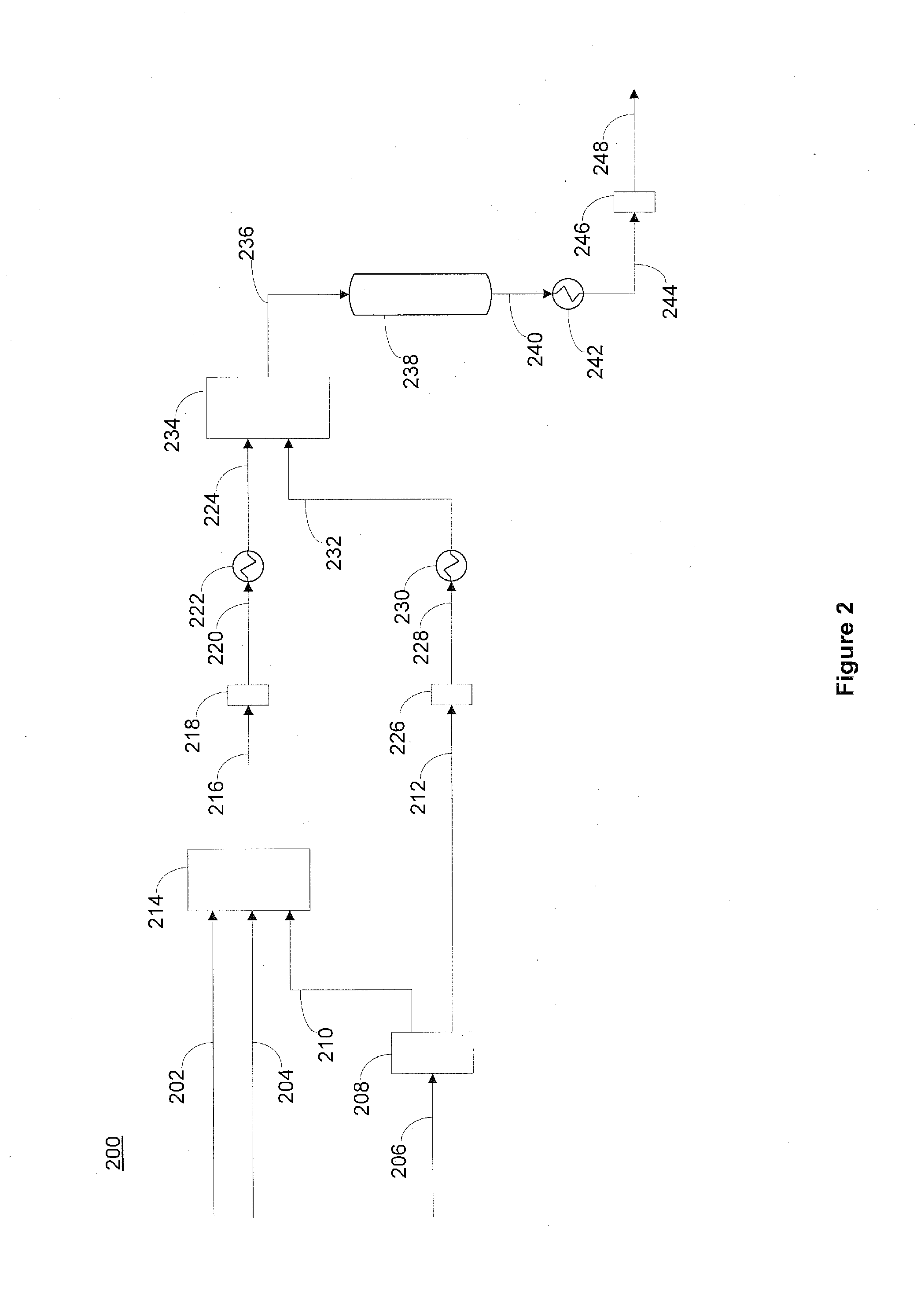Supercritical water process to upgrade petroleum
a technology of supercritical water and petroleum, applied in the direction of supercritical condition process, bulk chemical production, effluent separation, etc., can solve the problems of increasing the supply of inferior petroleum sources, increasing the cost of hydrogenation, and increasing the cost of hydrogenation. , to achieve the effect of increasing the cost of hydrogenation
- Summary
- Abstract
- Description
- Claims
- Application Information
AI Technical Summary
Benefits of technology
Problems solved by technology
Method used
Image
Examples
example 1
[0057]Referring now to FIG. 3, a deionized water tank (upstream from water line 104, not shown) and a crude oil tank (upstream from crude oil line 102, not shown) were filled with deionized water and Arabian heavy crude oil, respectively. Valve 103 positioned in line 102 and valve 105 in line 104 were each opened. Two high pressure pumps were connected to the deionized water tank T1, a were set at a volumetric flow rate of about 1.5 L / hr STP, and water was fed into the process lines 108 and 110. Pre-heaters positioned in lines 102 and 108 were set to temperatures of 538° C. and 150° C., respectively. Reactor 136 consisted of two vessel-type reactors connected in series. First vessel-type reactor had an impeller-type agitator inside to facilitate mixing of feed stream, wherein the rotating speed of the impeller was approximately 600 rpm. Both the first and second vessel-type reactors were maintained at a temperature of about 380° C. and the temperature therein was monitored with mult...
example 2
[0059]Referring now to FIG. 2, start-up agent feed tank (upstream from start-up line 202, not shown) was integrated to a pump through valve 203. A storage tanks filled with deionized water was fluidly connected to line 206 and another storage tanks filled with Arabian heavy crude oil was fluidly connected to line 204. The properties of the start-up agent are provided in Table 1. Pumps were connected to water storage tank and start-up agent storage tank by manipulating one or more valves. After setting the pumps at a volumetric flow rate of 1.0 l / hr at STP, water and the start-up agent were fed to the process line 216. Pre-heaters 222 and 230 were set at temperatures of about 150° C. and 550° C., respectively. Reactor 238 consisted of two vessel type reactors connected in series, wherein the first reactor had impeller-type agitator operated at 600 rpm to facilitate mixing of feed stream. The temperatures of two reactors connected in series were set to 390° C. and monitored using mult...
PUM
 Login to View More
Login to View More Abstract
Description
Claims
Application Information
 Login to View More
Login to View More - R&D
- Intellectual Property
- Life Sciences
- Materials
- Tech Scout
- Unparalleled Data Quality
- Higher Quality Content
- 60% Fewer Hallucinations
Browse by: Latest US Patents, China's latest patents, Technical Efficacy Thesaurus, Application Domain, Technology Topic, Popular Technical Reports.
© 2025 PatSnap. All rights reserved.Legal|Privacy policy|Modern Slavery Act Transparency Statement|Sitemap|About US| Contact US: help@patsnap.com



